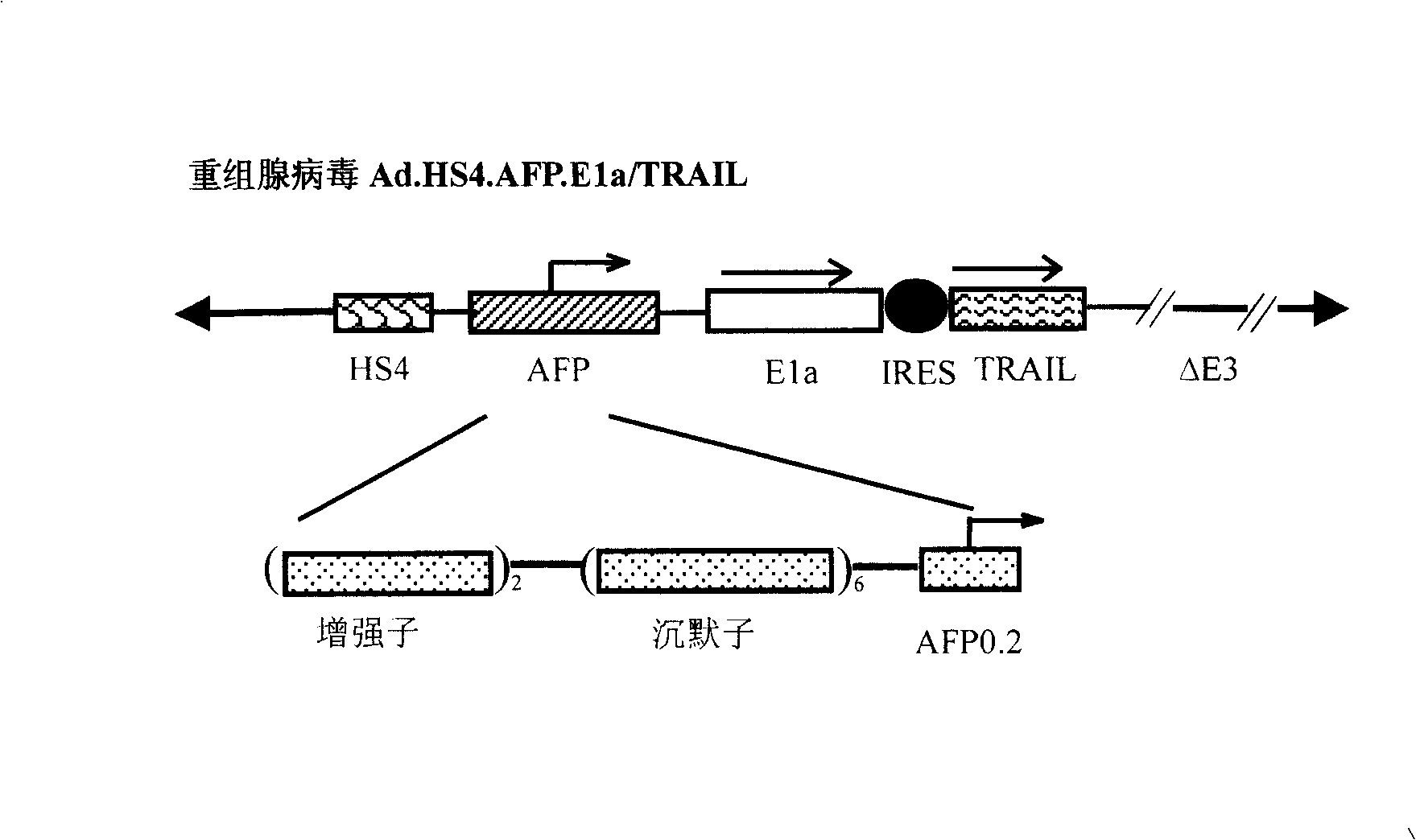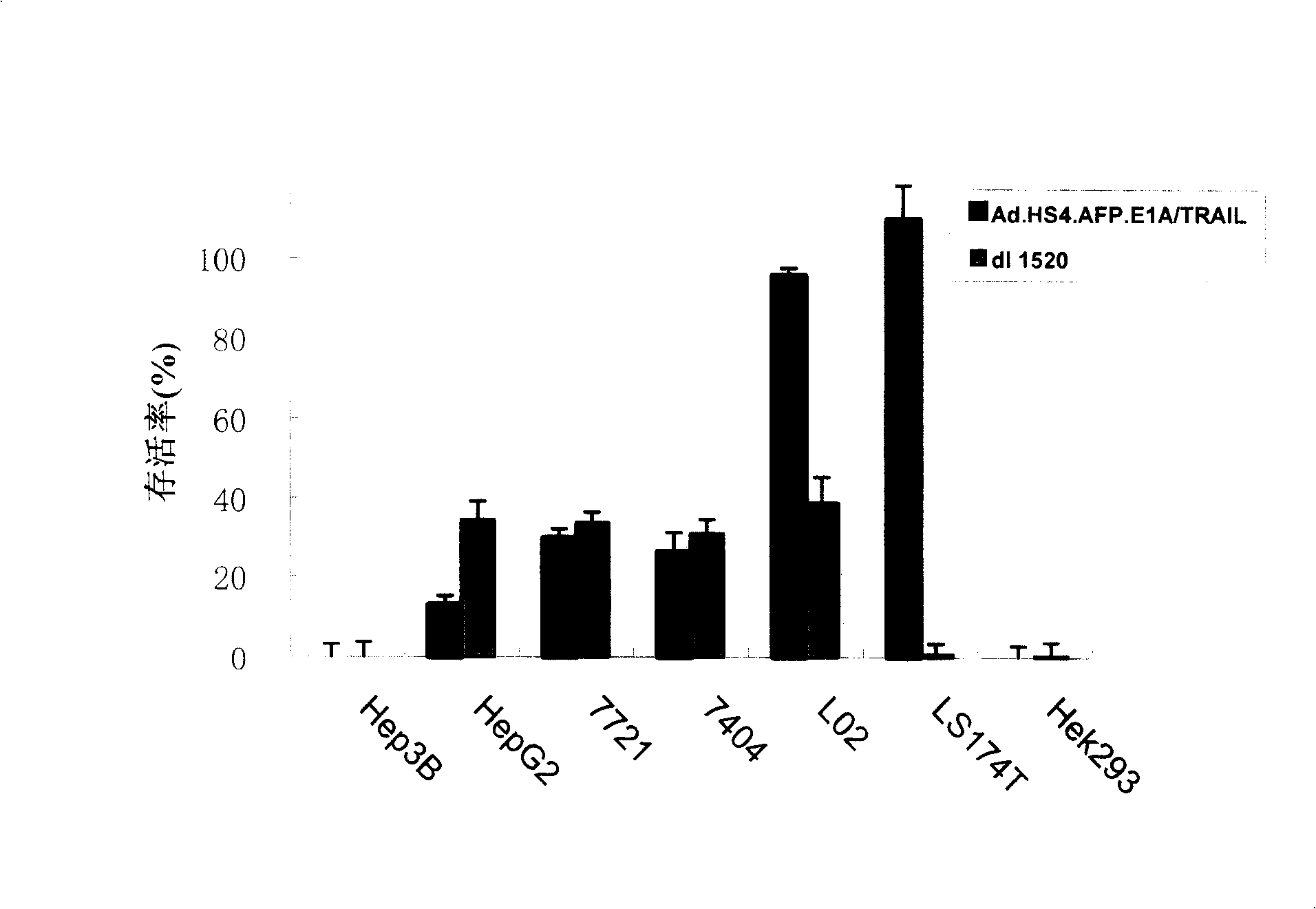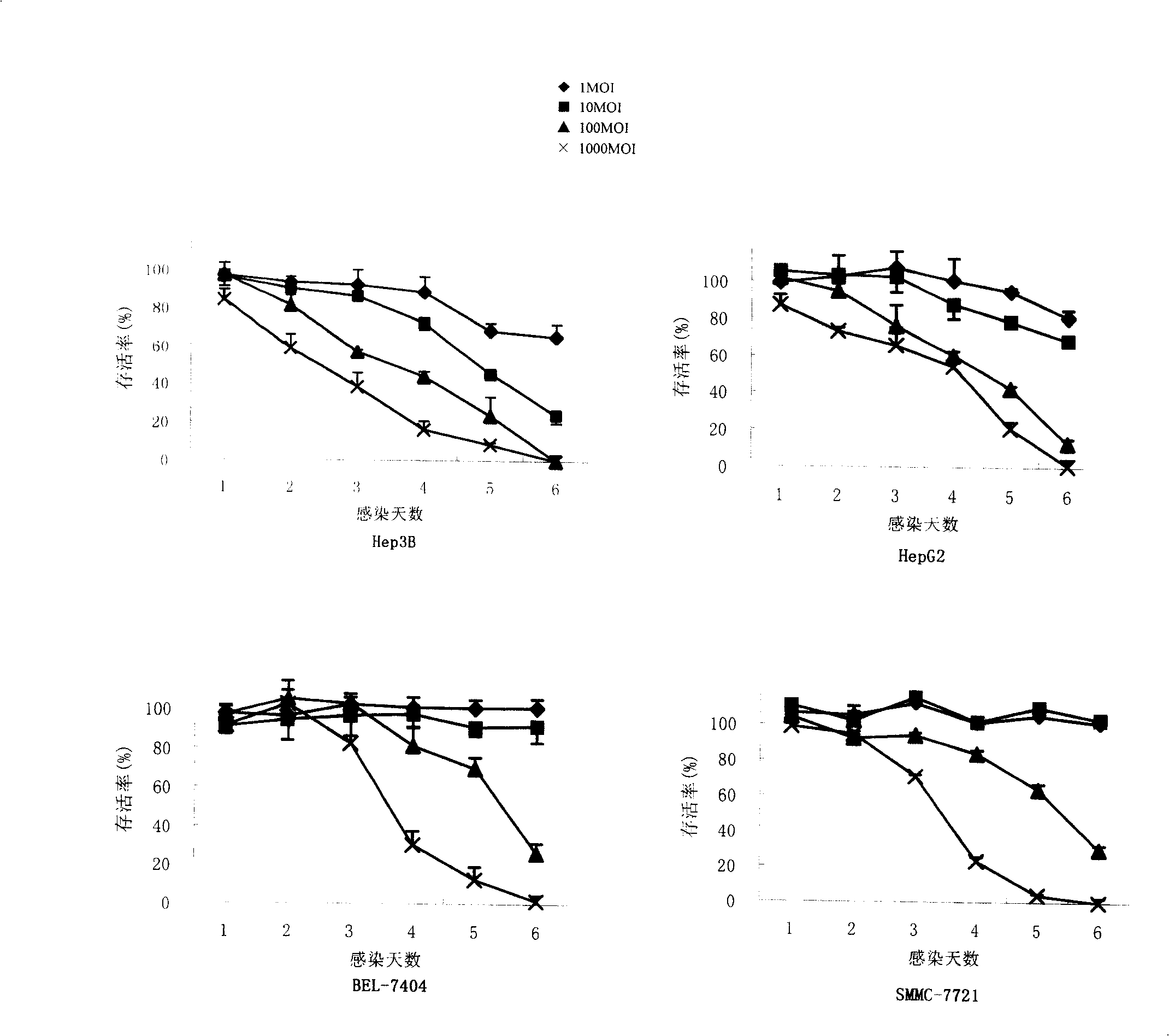Adenovirus vector for idiopathy liver genetherapy and using method
A technology of adenovirus and recombinant adenovirus, applied in gene therapy, methods based on microorganisms, medical raw materials derived from viruses/phages, etc., can solve problems such as unclear mechanism and cell apoptosis, and achieve strong tumor killing specificity, highly effective effect
- Summary
- Abstract
- Description
- Claims
- Application Information
AI Technical Summary
Problems solved by technology
Method used
Image
Examples
Embodiment I
[0095] The construction of embodiment 1 recombinant adenovirus AdHS4.AFP.E1a / TRAIL
[0096] The recombinant adenovirus AdHS4.AFP.E1a / TRAIL described below is a type 5 adenovirus vector with an alpha-fetoprotein promoter, and has an HS4 insulator gene upstream of the promoter, and an exogenous insertion gene downstream of the promoter Because the adenovirus early E1a gene related to tumor suppression and the tumor necrosis factor-related apoptosis-inducing ligand TRAIL gene related to apoptosis activation, and the two are connected through the internal ribosome entry site IRES, they share the same transcription unit, express separately.
[0097] Unless otherwise stated, the techniques used in the present invention are conventional techniques in the art, such as molecular cloning techniques, microbiology techniques, and cell biology techniques, and these techniques are fully explained in the literature. Such as Sambrook et al. "Molecular Cloning Laboratory Manual" Second Editio...
Embodiment II
[0103] Example II Study on the specific effect of recombinant adenovirus AdHS4.AFP.E1a / TRAIL in liver cancer cells
[0104] MTS method to detect the effect of recombinant adenovirus AdHS4.AFp.E1a / TRAIL on different tumor cells:
[0105] In order to detect the tumor-specific cytotoxicity of the recombinant adenovirus AdHS4.AFP.E1a / TRAIL, by using the MTS (Promega) kit to detect the cells of the virus in AFP negative / positive cells in live cells when the infection coefficient MOI is 100 (TCID50) Toxic specificity. HepG2, Hep3B, SMMC-7721, and BEL-7404 are liver cancer cell lines, L-02 is normal human liver cells, LS174T is human colon cancer cells, and Hek293 is human embryonic kidney cells. The above cells were inoculated in a 96-well plate to 104 cells per well. After 24 hours, they were infected with AdHS4.AFP.E1a / TRAIL, dl1520, or the culture medium was used as a control. MTS reagent was added at different time points and incubated at 37°C for one hour. After that, the 490...
Embodiment III
[0110] Example III Study on the antitumor effect of recombinant adenovirus AdHS4.AFP.E1a / TRAIL in nude mice bearing liver cancer xenografts
[0111] Anti-tumor effect of recombinant adenovirus AdHS4.AFP.E1a / TRAIL in nude mice bearing human hepatoma BEL-7404 tumors in vivo: 6-week-old BALB / C nude mice were inoculated with 1×107 BEL-7404 cell suspension 100μl. After tumor formation, when the transplanted tumor grew to 80-200mm3, they were randomly divided into groups, with 7-12 nude mice in each group, PBS, AdHS4.AFP.E1a / TRAIL (1.0×107 TCID50 / mm3), dl1520 (1.0×107 TCID50 / mm3), or DDP was directly injected into the transplanted tumor with an injection volume of 50 μl for 5 consecutive days and DDP for 7 consecutive days. The tumor volume was calculated by detecting the tumor diameter and measured twice a week on the 31st day. All tumor-bearing nude mice were sacrificed, and the tumor volume on the day of injection was set as 100%. Compared with the negative control group, the oth...
PUM
 Login to View More
Login to View More Abstract
Description
Claims
Application Information
 Login to View More
Login to View More - R&D Engineer
- R&D Manager
- IP Professional
- Industry Leading Data Capabilities
- Powerful AI technology
- Patent DNA Extraction
Browse by: Latest US Patents, China's latest patents, Technical Efficacy Thesaurus, Application Domain, Technology Topic, Popular Technical Reports.
© 2024 PatSnap. All rights reserved.Legal|Privacy policy|Modern Slavery Act Transparency Statement|Sitemap|About US| Contact US: help@patsnap.com










